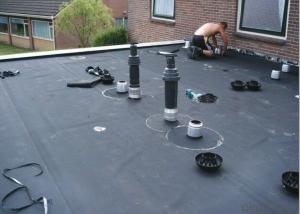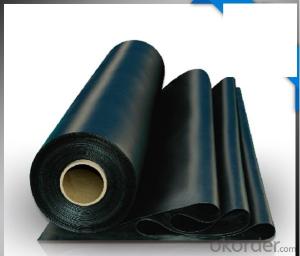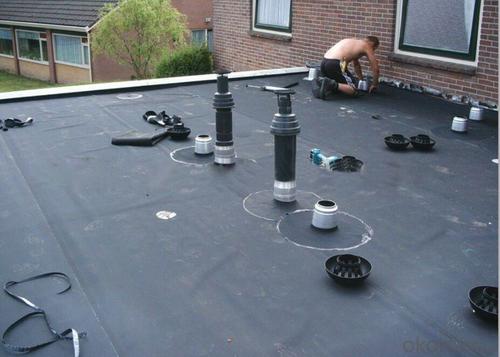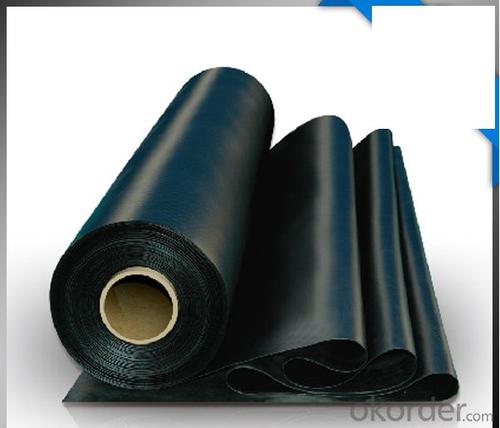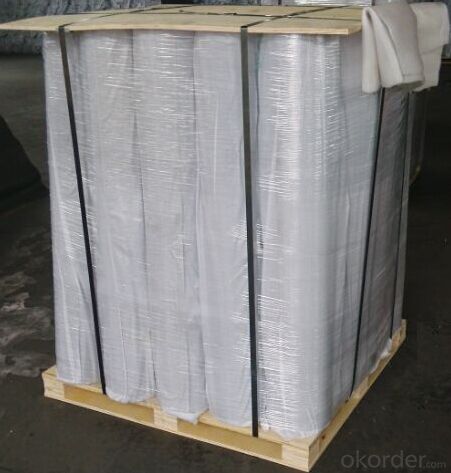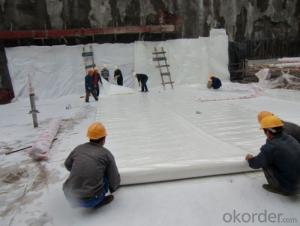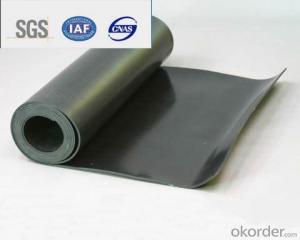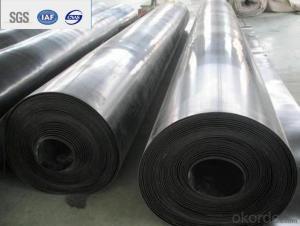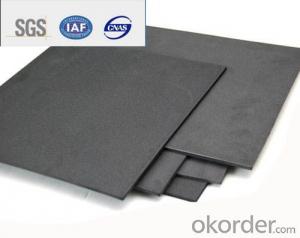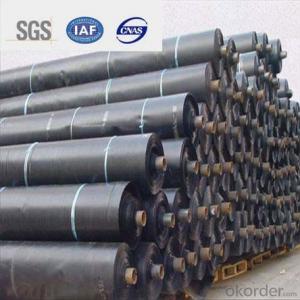EPDM Waterproof Roofing Membrane Thickness with 1.2 mm
- Loading Port:
- Qingdao
- Payment Terms:
- TT OR LC
- Min Order Qty:
- 5000 m²
- Supply Capability:
- 10000 m²/month
OKorder Service Pledge
OKorder Financial Service
You Might Also Like
Introduction for EPDM Waterproof Membrane
This waterproof coiled material is of high elasticity with best performance among high polymer waterproof coiled material in the world.It is also the most typical one in the world.Waterproof coiled material made of ternary ethylene-propylene rubber of ‘CHEN SHENG’ brand is produced with the use of the most advanced continuous extrusion and vulcanization technology and related equipments which are specially designed for production of such product.It is good in compactness,without bubble and performance difference in length and breadth,performances reach or exceed the demands of GB18173.1-2012 standard.
Product Features of EPDM Waterproofing Membrane:
1. the excellent anti-aging, in the long term light, humidity, cold use of the naturalenvironment, small changes in physical properties, used in the temperature: From -50 degree Celsius to +80degree Celsious.
2.with outstanding ozone resistance, resistance to ultraviolet and atmospheric corrosion of many chemical corrosive substances.
3. high tensile strength, high elongation, high flexibility, capable of sustaining a puncture of hard material, good anti-crack, high adaptability of the grass roots' contraction and the crack and deformation, and give full play to extend the performance, playing the role of waterproofing.
4.long lifetime, high durability can achieve more than 25 years.
5.the cold construction operation, no environment pollution and simple operation.
FAQ:
1. What are we supplying?
We are specialized in producing Colorful Asphalt Roof Shingle, SBS/APP modified bitumen waterproof membrane, Self adhesive bitumen waterproof membrane, PVC waterproofing membrane, EPDM rubber roofing membrane, Single Component Polyurethane Waterproof Coating, and Spray Polyurea Waterproof Coating.
2. How Many years experience do we have?
We have been exported to more than 20 countries in the past 15 years.
3. How long do we usually reply your request?
We always reply our customer within 24 hours.
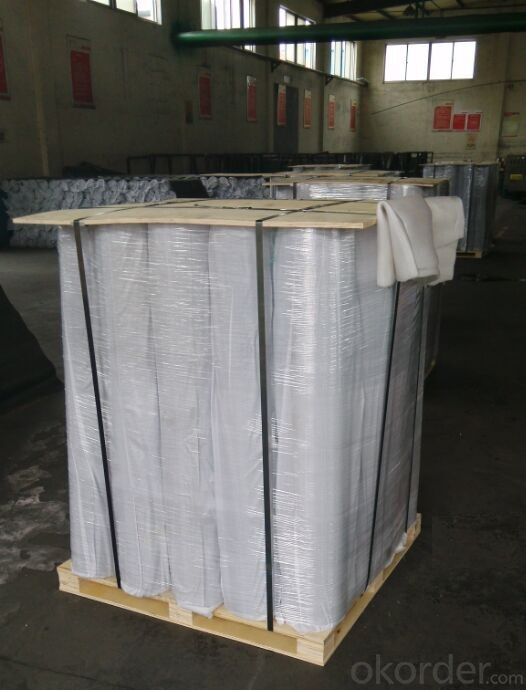
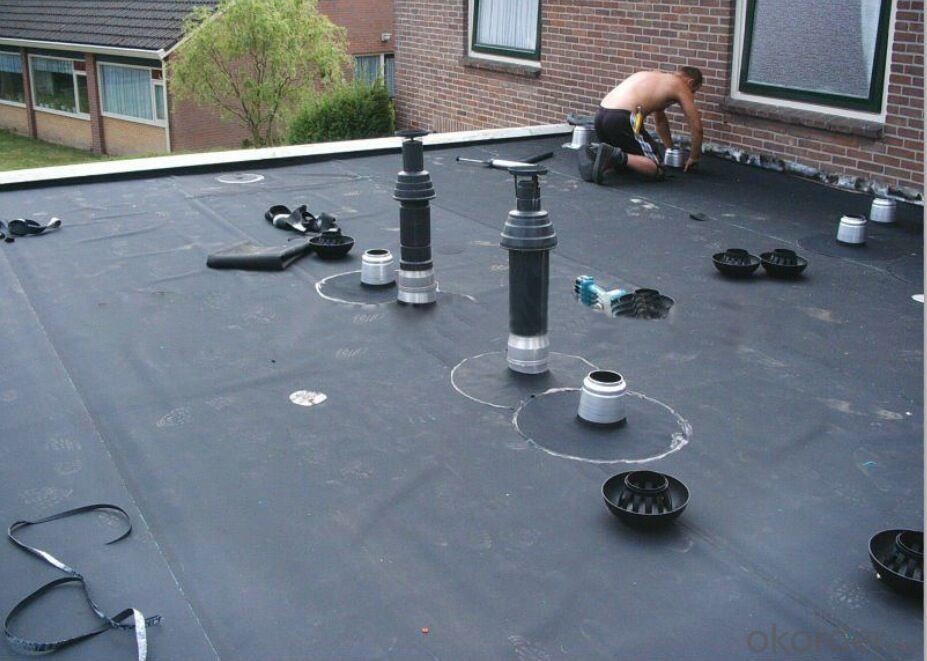

- Q: Are waterproofing membranes resistant to earthquake movements?
- Waterproofing membranes are not specifically designed to be resistant to earthquake movements. Their primary function is to prevent water penetration and protect structures from moisture damage. While they may provide some level of resistance to minor ground movements, they are not intended to withstand the significant forces generated during earthquakes. Additional seismic design measures and materials are required to ensure structures can withstand seismic events.
- Q: Can a waterproofing membrane be used for a podium deck?
- Indeed, a podium deck can utilize a waterproofing membrane. A podium deck refers to an elevated platform or structure commonly found in commercial buildings or multi-story residential complexes. Given its raised position, a podium deck is exposed to various weather elements, including rain and moisture. Consequently, it becomes imperative to implement a dependable waterproofing system to shield the underlying structure from water-related harm. A waterproofing membrane emerges as a popular option for podium decks due to its ability to serve as an effective barrier against water infiltration. Generally, this membrane is applied beneath the deck's surface, acting as a protective layer that thwarts water from permeating the underlying structure. Its design prioritizes durability, flexibility, and resistance to weathering, guaranteeing long-term protection for the deck. Additionally, a waterproofing membrane can yield supplementary advantages for a podium deck. It can function as a vapor barrier, preventing the accumulation of moisture within the structure, which could lead to mold growth and material deterioration. Moreover, certain waterproofing membranes offer heightened UV resistance, contributing to the deck's longevity and aesthetic appeal preservation. When selecting a waterproofing membrane for a podium deck, it is crucial to consider factors such as the deck's design, projected foot traffic levels, and local climate conditions. Different membrane types, including sheet membranes, liquid membranes, or spray-applied membranes, may be suitable depending on the specific project requirements. In conclusion, employing a waterproofing membrane indeed proves suitable for a podium deck. It furnishes a reliable and effective solution for safeguarding the deck and underlying structure from water damage, thereby ensuring the durability and functionality of the podium deck.
- Q: Can a waterproofing membrane be used in areas with chemical exposure, such as industrial settings?
- In industrial settings, a waterproofing membrane can indeed be utilized even in areas where chemical exposure is a concern. However, it is vital to carefully consider the compatibility of the chosen waterproofing membrane with the chemicals that are present. Different membranes possess varying degrees of resistance to different chemicals, hence the utmost importance of selecting a membrane that can endure the specific chemical exposure in the industrial setting. Furthermore, ensuring the proper installation and maintenance of the waterproofing membrane is crucial in order to guarantee its effectiveness and longevity in such environments. Regular inspections must be carried out, and any damage caused by chemical exposure should be promptly addressed through repairs or replacements. Ultimately, by making the right choice and consistently maintaining it, a waterproofing membrane can serve as an effective barrier against water and chemicals in industrial settings.
- Q: Are waterproofing membranes suitable for high-traffic areas?
- Waterproofing membranes prove to be an ideal solution for areas with high foot traffic. Their purpose is to create a barrier against water infiltration, safeguarding the structure and preventing water-related harm. It is worth noting that high-traffic zones like walkways, driveways, parking lots, and other heavily frequented spaces are at risk of continuous exposure to water, resulting in structural damage and gradual deterioration. By employing waterproofing membranes in these areas, water penetration is effectively thwarted, guaranteeing their resilience and longevity. Furthermore, these membranes are often engineered to be slip-resistant, adding an extra layer of safety in high-traffic zones. Consequently, implementing waterproofing membranes in such areas is a prudent decision to address water-related concerns, preserve the structural integrity of the space, and ensure the safety of its occupants.
- Q: Can a waterproofing membrane be used in conjunction with soundproofing materials?
- Yes, a waterproofing membrane can be used in conjunction with soundproofing materials. In fact, it is quite common to use both of these materials together in construction projects. Waterproofing membranes are typically used to prevent the penetration of water into a structure, while soundproofing materials are used to reduce noise transmission. These two materials serve different purposes but can be used simultaneously to provide both waterproofing and soundproofing benefits. For example, in a building with a basement or a bathroom, a waterproofing membrane can be installed on the walls or floors to prevent water infiltration, and then soundproofing materials can be added on top of the membrane to reduce noise transmission from adjacent areas. By combining these two materials, a building can be protected from water damage while also providing a quieter and more comfortable environment for its occupants.
- Q: Can a waterproofing membrane be used on precast gypsum surfaces?
- Yes, a waterproofing membrane can be used on precast gypsum surfaces. Precast gypsum surfaces are often used in construction for walls, ceilings, and other building components. These surfaces are typically porous and can be susceptible to water damage if not properly protected. A waterproofing membrane is a barrier that is applied to the surface of the precast gypsum to prevent water infiltration. It acts as a protective layer, preventing water from seeping into the gypsum and causing damage such as mold growth or deterioration. There are various types of waterproofing membranes available in the market, including liquid-applied membranes, sheet membranes, and cementitious coatings. These membranes are designed to adhere to different types of surfaces, including precast gypsum. When using a waterproofing membrane on precast gypsum surfaces, it is important to ensure that the surface is clean and free from any contaminants that may interfere with the adhesion of the membrane. The membrane should be applied according to the manufacturer's instructions, taking into consideration factors such as temperature, humidity, and drying time. In conclusion, yes, a waterproofing membrane can be used on precast gypsum surfaces to protect them from water damage. It is essential to choose the right type of membrane and follow proper application techniques to ensure effective protection.
- Q: Can a waterproofing membrane be used for solar panel installations?
- Yes, a waterproofing membrane can be used for solar panel installations. In fact, it is often recommended to use a waterproofing membrane as part of the installation process to protect the roof or other surfaces beneath the solar panels from water damage. A waterproofing membrane acts as a barrier to prevent water from seeping into the underlying structure, ensuring that the solar panel installation remains watertight and secure. This is particularly important as solar panels are typically installed on rooftops, where they are exposed to various weather conditions. By incorporating a waterproofing membrane, it helps to prolong the lifespan of the solar panels and prevents any potential water-related issues that could affect their performance.
- Q: Are there any specific considerations for installing a waterproofing membrane on sloped surfaces?
- When installing a waterproofing membrane on sloped surfaces, there are several specific considerations to take into account. Here are a few important ones: 1. Ensuring proper slope: It is crucial to ensure that the surface has the appropriate slope for drainage. The design should allow water to flow away from the surface, preventing any pooling or ponding. This will help avoid water penetration and potential damage to the membrane. 2. Compatibility with slope materials: It is important to consider how well the waterproofing membrane adheres to the materials used on the slope. It should not react negatively with any other materials present. 3. Anchoring and fastening: Proper anchoring and fastening of the waterproofing membrane on sloped surfaces is important for stability and longevity. This may involve using additional mechanical fasteners or adhesives specifically designed for sloped surfaces. 4. Paying attention to transition and edge details: Sloped surfaces often have transition areas or edges where the waterproofing membrane meets other surfaces, like walls or adjacent slopes. These areas require specific attention to ensure a proper seal and prevent water infiltration. 5. Installing drainage systems: Additional drainage systems may be necessary on sloped surfaces to effectively manage water runoff. This could include drains, gutters, or downspouts to divert water away from the waterproofing membrane. 6. Ensuring quality installation: Installing a waterproofing membrane on a sloped surface requires careful attention to detail and proper installation techniques. It is important to follow the manufacturer's instructions and industry best practices for a successful and durable installation. Overall, a thorough understanding of the unique challenges and considerations involved in installing a waterproofing membrane on sloped surfaces is necessary. By addressing these specific factors, you can ensure effective waterproofing and protection for your sloped surface.
- Q: Does a waterproofing membrane require any specific preparation of the substrate before installation?
- Preparation of the substrate is essential for the installation of a waterproofing membrane. Before applying the membrane, the surface on which it will be placed must be thoroughly cleaned, dried, and devoid of any contaminants or debris that could impede its adhesion. This process typically entails the removal of loose materials, such as old paint or sealants, and the leveling of any uneven surfaces. Furthermore, it may be necessary to repair any cracks or damage in the substrate to guarantee a proper and efficient installation of the waterproofing membrane. By following the recommended preparatory procedures, one can ensure that the membrane performs optimally and exhibits remarkable durability, effectively safeguarding the underlying structure against water infiltration.
- Q: Can a waterproofing membrane be used for historical buildings?
- Yes, a waterproofing membrane can be used for historical buildings. However, it is important to consider the specific requirements and characteristics of the building. Some historical buildings may have unique architectural features or materials that need to be preserved, so it is crucial to choose a waterproofing membrane that is compatible with the building's structure and aesthetics. Additionally, consulting with preservation experts and following proper guidelines is essential to ensure the long-term protection and conservation of the historical building.
Send your message to us
EPDM Waterproof Roofing Membrane Thickness with 1.2 mm
- Loading Port:
- Qingdao
- Payment Terms:
- TT OR LC
- Min Order Qty:
- 5000 m²
- Supply Capability:
- 10000 m²/month
OKorder Service Pledge
OKorder Financial Service
Similar products
Hot products
Hot Searches
Related keywords
